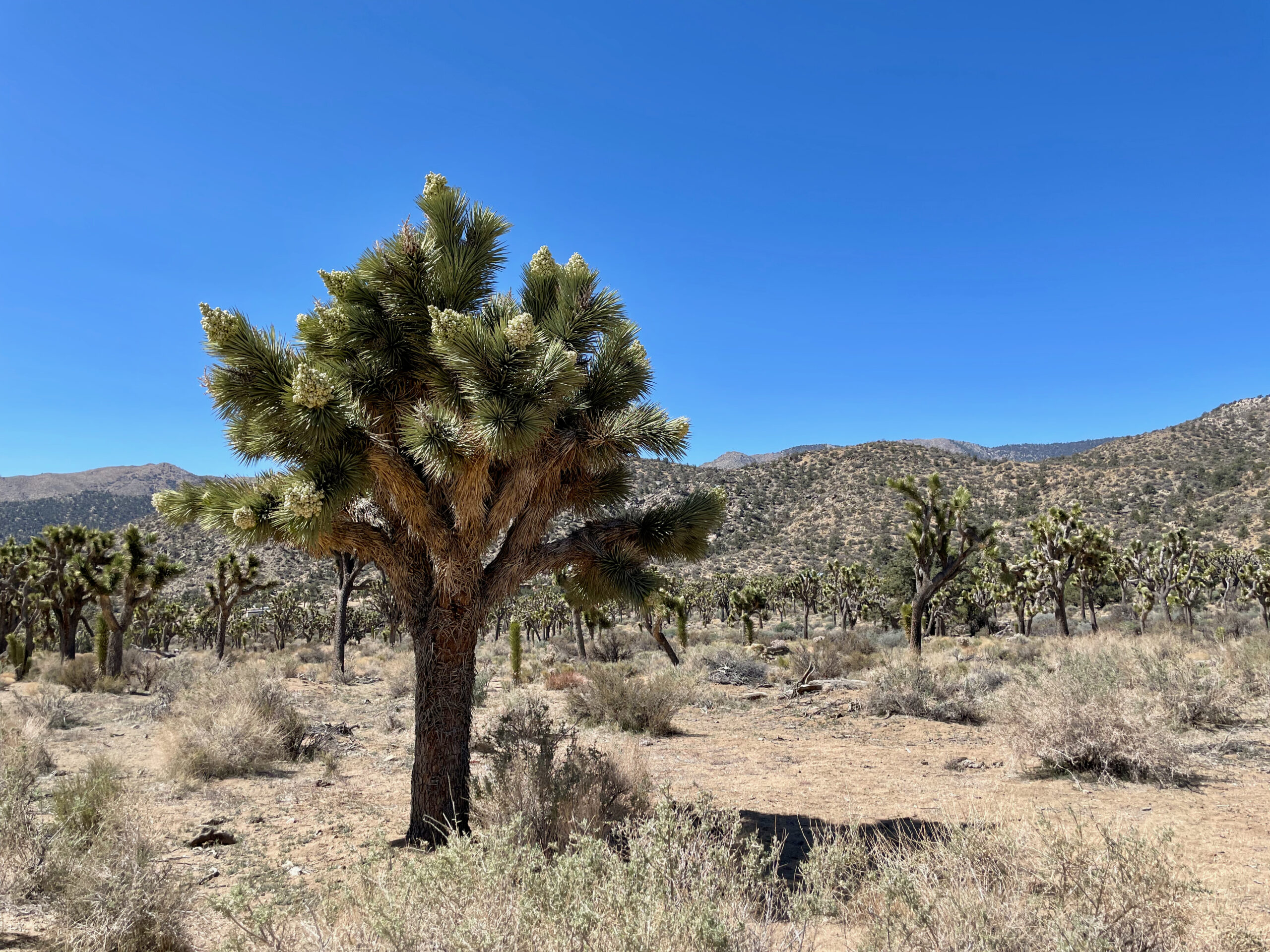Climate change has already shifted global temperatures and precipitation patterns from historical conditions, but tracking how these changes have impacted vulnerable species and ecosystems is not always easy. A new project from CSUN biologists may demonstrate a way forward, however, by using machine learning to identify how a century of changing weather conditions has shaped the reproductive activity of an iconic California species, Joshua trees.
Joshua trees, the tall, shaggy yuccas that grow across the Mojave Desert, don’t flower every year. Populations of the trees will generally flower in sync — an event called “masting” — or remain mostly flower-less, in any given year. What conditions trigger Joshua tree masting has been the subject of much speculation, because big bloom events can be a sight to see, but no one has conclusively tested possible causes. CSUN Associate Professor of Biology Jeremy Yoder realized there might be data available to make the connection between Joshua tree flowering and annual weather variation right on his smartphone, in the database of photo records contributed by people using the iNaturalist app.
Yoder worked with Biology alumna Ana Karina Andrade to sift through photos of Joshua trees contributed by iNaturalist users and label them based on whether the photos showed flowers or fruits, indicating flowering had occurred in the times and places the photos were taken. Andrade ultimately curated more than 10,000 iNaturalist records. This was a powerful enough dataset to train a machine learning model relating weather conditions to the presence or absence of flowers over a 15-year period covered by iNaturalist records. The trained model could then estimate whether or not flowering had occurred in years where weather records were available even if there were no iNaturalist records, and Yoder used these predictions to reconstruct Joshua tree masting events going back to the year 1900. This “hindcast” recovered flowering events recorded in independent records like herbarium specimens and newspaper articles, and it revealed that climate change over the 20th Century has probably increased the frequency of Joshua tree masting years.
In the early 20th Century, the trees saw conditions favoring flowering roughly once every five years, but now see those conditions closer to once every four years. This change is due to the way the trees seem to respond to weather patterns — they’re more likely to flower if they experience a wet winter following a relatively dry winter, taking advantage of rain when it comes. Annual precipitation has become more unpredictable in the Mojave, as it has elsewhere in the world, and that means there are more years with big contrasts in precipitation that trigger flowering.
In the paper reporting these results, Yoder, Andrade, and their collaborators point out that Joshua trees flowering more often isn’t necessarily good for the trees. A healthy population of plants needs to flower, but it also needs to produce fruits from those flowers, and the seeds in the fruits need to survive to become established adult Joshua trees. The conditions that make the trees flower more often may also be more challenging for fruit production and seedling survival — though this remains to be seen. The takeaway, at this point, is that climate change is already impacting Joshua tree populations, and will likely shift the conditions in their desert habitat even more if it continues.
The full paper is available open access in the journal Ecology Letters.
Image: A western Joshua tree flowering profusely in spring 2022 (Jeremy Yoder)

